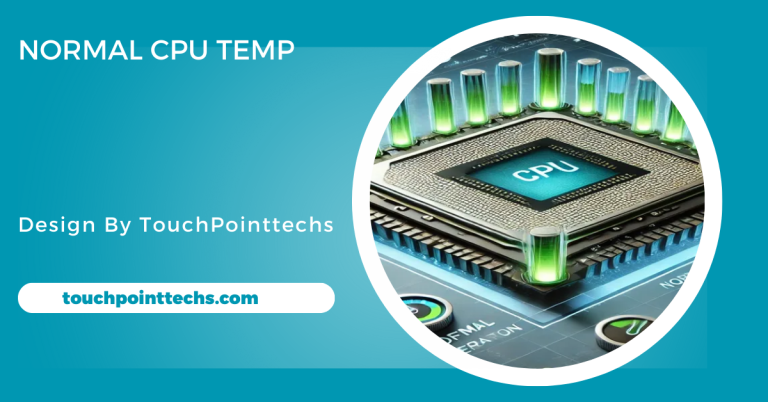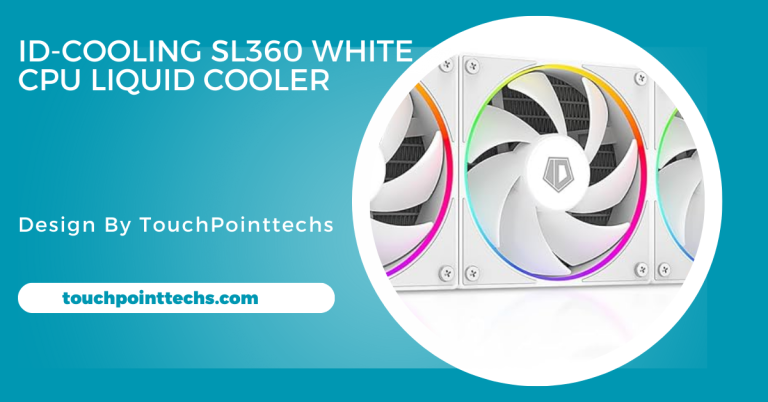Liquid Cooling for AMD Genora CPU – A Comprehensive Guide!
Liquid cooling for AMD Genora CPUs improves heat dissipation and reduces noise. This guide offers installation and maintenance tips.
The AMD Genora CPU series is designed for high-performance computing, often used for gaming, content creation, and other demanding tasks. With such power comes heat, and keeping your CPU cool is essential for optimal performance.
In this article, we’ll explore everything you need to know about liquid cooling for AMD Genora CPUs, from the benefits to installation tips and maintenance. This simple and easy-to-understand guide is perfect for anyone looking to upgrade their cooling system.
Table of Contents
Why Choose Liquid Cooling for AMD Genora CPU?
Better Heat Dissipation:

One of the primary reasons to choose liquid cooling for your AMD Genora CPU is its ability to dissipate heat more effectively than traditional air cooling. With liquid cooling, the heat from your CPU is absorbed by the liquid coolant, transferred to a radiator, and then released into the air through fans.
- Efficient cooling: Liquid cooling can handle higher temperatures and keep your CPU running smoothly even during intensive tasks like gaming or video editing.
- More stable performance: Lower temperatures ensure that your AMD Genora CPU doesn’t throttle, allowing it to perform at its best.
Quieter Operation:
Compared to air coolers, which rely on large fans that can be noisy, liquid cooling solutions are often much quieter. The liquid transfers heat more efficiently, so the fans don’t need to work as hard, resulting in quieter operation.
- Reduced noise levels: Ideal for those who want a quieter workspace or gaming environment.
- Perfect for long gaming sessions: You can enjoy marathon gaming sessions without being distracted by loud fan noise.
Aesthetic Appeal:
Liquid cooling systems, especially all-in-one (AIO) coolers, come with sleek designs and customizable RGB lighting. This makes them visually appealing for users who want their PC builds to look stylish.
- Customizable RGB lighting: Many liquid coolers allow you to sync the RGB lighting with other components in your system, enhancing the overall look of your setup.
- Modern design: The sleek tubing and compact pumps add a modern touch to your build.
Key Features of Liquid Cooling for AMD Genora CPU:
Radiator Size and Performance:
When choosing a liquid cooler for your AMD Genora CPU, the radiator size plays a crucial role. The larger the radiator, the more efficient it is at dissipating heat. Most liquid coolers come in sizes like 240mm, 280mm, and 360mm.
- 240mm radiator: Suitable for moderate cooling needs, ideal for users who don’t plan to overclock their CPUs.
- 360mm radiator: Provides superior cooling for users who push their AMD Genora CPU to its limits through overclocking or heavy workloads.
Pump and Tubing Quality:
The pump is the heart of any liquid cooling system, responsible for moving the coolant through the tubes and radiator. High-quality pumps ensure smooth circulation, while durable tubing prevents leaks and enhances reliability.
- Premium pumps: Look for coolers with reliable, high-performance pumps for consistent cooling.
- Leak-proof tubing: Ensure the tubing is made from high-quality materials to avoid leaks and extend the life of your cooling system.
Also Read: ID-COOLING SL360 White CPU Liquid Cooler – A Comprehensive Guide!
Customizable ARGB Lighting:
Many modern liquid coolers come with Addressable RGB (ARGB) lighting, which allows users to customize the lighting effects. You can sync the cooler’s lighting with other RGB components in your system for a coordinated look.
- Sync with motherboard software: Most coolers can be controlled via software like ASUS Aura Sync, MSI Mystic Light, or Gigabyte RGB Fusion.
- Endless customization: Create unique lighting patterns that match your personal style.
Installation Process for Liquid Cooling AMD Genora CPU:
Step 1: Choose a Compatible Cooler
Before purchasing a liquid cooler, ensure it is compatible with the AMD Genora CPU. Most modern liquid coolers are compatible with a variety of CPU sockets, including those used by AMD processors.
- Check socket compatibility: Ensure the cooler supports AMD sockets like AM4, AM5, or newer.
- Verify radiator size: Make sure your PC case can accommodate the size of the radiator.
Step 2: Mount the Radiator
Once you’ve selected a compatible liquid cooler, the next step is to mount the radiator inside your PC case. Radiators are typically installed at the top or front of the case, depending on the space available.
- Top or front mounting: Position the radiator where it fits best in your case.
- Secure with screws: Use the screws provided to secure the radiator in place.
Step 3: Install the Pump
After mounting the radiator, you’ll need to install the pump onto your AMD Genora CPU. The pump is usually mounted on top of the CPU using brackets provided with the cooler.
- Apply thermal paste: Make sure to apply thermal paste to the CPU before attaching the pump.
- Secure the pump: Attach the pump to the CPU and secure it with screws.
Step 4: Connect the Fans and Pump
The next step involves connecting the fans and pump to your motherboard. Most motherboards have dedicated headers for both CPU fans and pumps, typically labeled as “CPU_FAN” or “PUMP.”
- Connect to the correct headers: Ensure that the pump and fans are connected to the appropriate headers for proper power and control.
- Manage cables neatly: Organize the cables to avoid clutter and improve airflow.
Step 5: Power Up and Test
Once everything is installed and connected, power up your system and test the cooler. Check for any unusual noises, leaks, or other issues that could affect the cooling performance.
- Monitor CPU temperature: Use software like HWMonitor or AMD Ryzen Master to track the CPU temperature.
- Check RGB lighting: Customize the RGB lighting to ensure everything is functioning properly.
Maintenance Tips for Liquid Cooling AMD Genora CPU:
Regular Dust Cleaning:

Dust buildup can severely reduce cooling efficiency. Use compressed air to clean the radiator, fans, and other cooling components every 2-3 months. Avoid using harsh chemicals to clean delicate parts like the radiator fins to prevent damage.
Check for Leaks and Wear:
Routinely inspect the cooling tubes, radiator, and pump for any signs of leaks, cracks, or wear. Early detection helps prevent potential damage to the motherboard, CPU, or GPU caused by coolant leakage.
Monitor CPU Temperature:
Always track your CPU temperature using software like HWMonitor, SpeedFan, or AMD Ryzen Master. High or fluctuating temperatures could indicate that the liquid cooler is not functioning properly, requiring prompt inspection.
Check Fan Speed and Pump Operation:
Ensure that both the fans and pump are running at their optimal speeds. You can adjust fan curves or pump speeds through BIOS or third-party software for efficient cooling.
Clean or Replace Fans:
Over time, fans may slow down due to dust or wear. If regular cleaning doesn’t improve their performance, consider replacing them to maintain optimal airflow.
Inspect Tubing for Blockages:
Over time, coolant tubing may experience blockages due to debris buildup or algae growth in the liquid. Check for any blockages, discoloration, or bubbles that might obstruct proper flow, and flush the system if needed.
Reapply Thermal Paste:
Thermal paste degrades over time. Reapply a fresh layer of thermal paste on your CPU every 1-2 years to improve heat transfer between the CPU and the cooling block.
Maintain Proper Cable Management:
Ensure that cables from the pump, fans, and power connectors are neatly arranged to avoid airflow obstruction, improving the cooling efficiency of your system.
Replace Coolant Periodically:
If you are using a custom loop system, it’s advisable to replace the coolant every 1-2 years to maintain its thermal properties and prevent any contaminants from affecting cooling performance.
Check Radiator Mounting:
Ensure the radiator is securely mounted and there are no vibrations or loose screws. Loose mounting can lead to inefficient heat dissipation and increased noise levels.
FAQ’S
1. Is Liquid Cooling Necessary for AMD Genora CPU?
Liquid cooling is not strictly necessary, but it offers better cooling performance, especially for users who overclock their CPUs or run intensive applications. It helps maintain lower temperatures and ensures stable performance.
2. How Long Does a Liquid Cooler Last?
Most liquid coolers can last between 3 to 5 years with proper maintenance. Regular cleaning and monitoring can extend their lifespan.
3. Can I Install Liquid Cooling on My Own?
Yes, installing liquid cooling is relatively straightforward, especially if you follow the instructions provided by the manufacturer. Make sure to check compatibility with your CPU and case before installation.
4. Do Liquid Coolers Require Refilling?
Most AIO (All-In-One) liquid coolers are sealed units that do not require refilling. However, custom liquid cooling loops may need occasional refilling.
5. Does Liquid Cooling Void the Warranty of My AMD Genora CPU?
No, using liquid cooling does not void the warranty of your CPU as long as the cooler is installed correctly and no damage occurs during installation.
Conclusion
Liquid cooling for AMD Genora CPUs improved heat dissipation, reduces noise, and enhances performance. With proper installation and maintenance, it ensures stability during demanding tasks, making it an excellent choice for gamers and creators.







